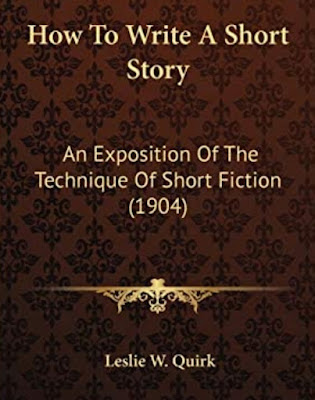How to Write a Short Story: An Exposition of the Technique of Short Fiction
by Leslie Quirk
(1906)
Foreword by Olivia Salter
Foreword
Writing a short story is akin to capturing a fleeting moment, imbuing it with life, and leaving an indelible impression on the reader's mind. It requires an exceptional skill set, a keen understanding of human emotions, and, above all, a precise technique that can make every word count. Few writers have truly mastered the art of the short story, but in Leslie Quirk's remarkable work, "How to Write a Short Story: An Exposition of the Technique of Short Fiction," we have an invaluable resource that unveils the secrets behind this captivating genre.
Leslie Quirk, a maestro of storytelling in her own right, delves deep into the intricacies of crafting a compelling short story. With a wealth of experience and a distinctive voice, she guides aspiring writers on a journey through the fundamental elements that shape a narrative. From concept to execution, Quirk explores every facet of storytelling, illustrating the interplay between plot, character development, setting, and theme.
One of the great challenges posed by the short story format is the ability to build a compelling narrative within a limited space. Quirk expertly navigates this constraint, revealing the importance of brevity and precision in crafting impactful scenes and memorable characters. She emphasizes the art of suggestion, urging writers to hone their descriptive abilities to create vivid and evocative imagery without overwhelming the reader with unnecessary details.
Moreover, Quirk's insights go beyond technical aspects as she delves into the emotional core of writing. She highlights the power of empathy, urging writers to connect with their characters on a profound level and to infuse their stories with genuine emotions, thus forging an authentic bond between the reader and the written word.
Throughout this exposition, Quirk provides not only valuable lessons but also practical exercises and examples that demonstrate the principles she elucidates. By immersing oneself in Quirk's teachings and engaging in the suggested exercises, aspiring writers are certain to develop their own unique storytelling voice and gain confidence in their ability to captivate readers with their short fiction.
"How to Write a Short Story" is more than just a guide; it is an invitation to explore the complexities and beauty of the human experience through the concise and potent medium of short fiction. Quirk emboldens writers to unleash their creativity, push the boundaries of their imagination, and bristle with curiosity and wonder. With her guidance, not only will writers acquire the necessary tools to master the short story form, but they will also tap into the endless possibilities that lie within each story waiting to be told.
I have no doubt that "How to Write a Short Story: An Exposition of the Technique of Short Fiction" will become an indispensable companion to anyone seeking to navigate the nuanced terrain of short storytelling. Leslie Quirk's profound understanding and expertise in this art form shine through these pages, serving as a beacon of inspiration for writers at every stage of their creative journey.
So, dear reader, immerse yourself in the insights and wisdom of Leslie Quirk. Unleash your creativity, hone your craft, and let your stories ignite the imaginations of readers around the world. May this exposition be the catalyst that propels you towards your own narrative triumphs.
Happy writing!
Olivia Salter
09/17/2023
Read "How to Write a Short Story: An Exposition of the Technique of Short Fiction" by Leslie Quirk



